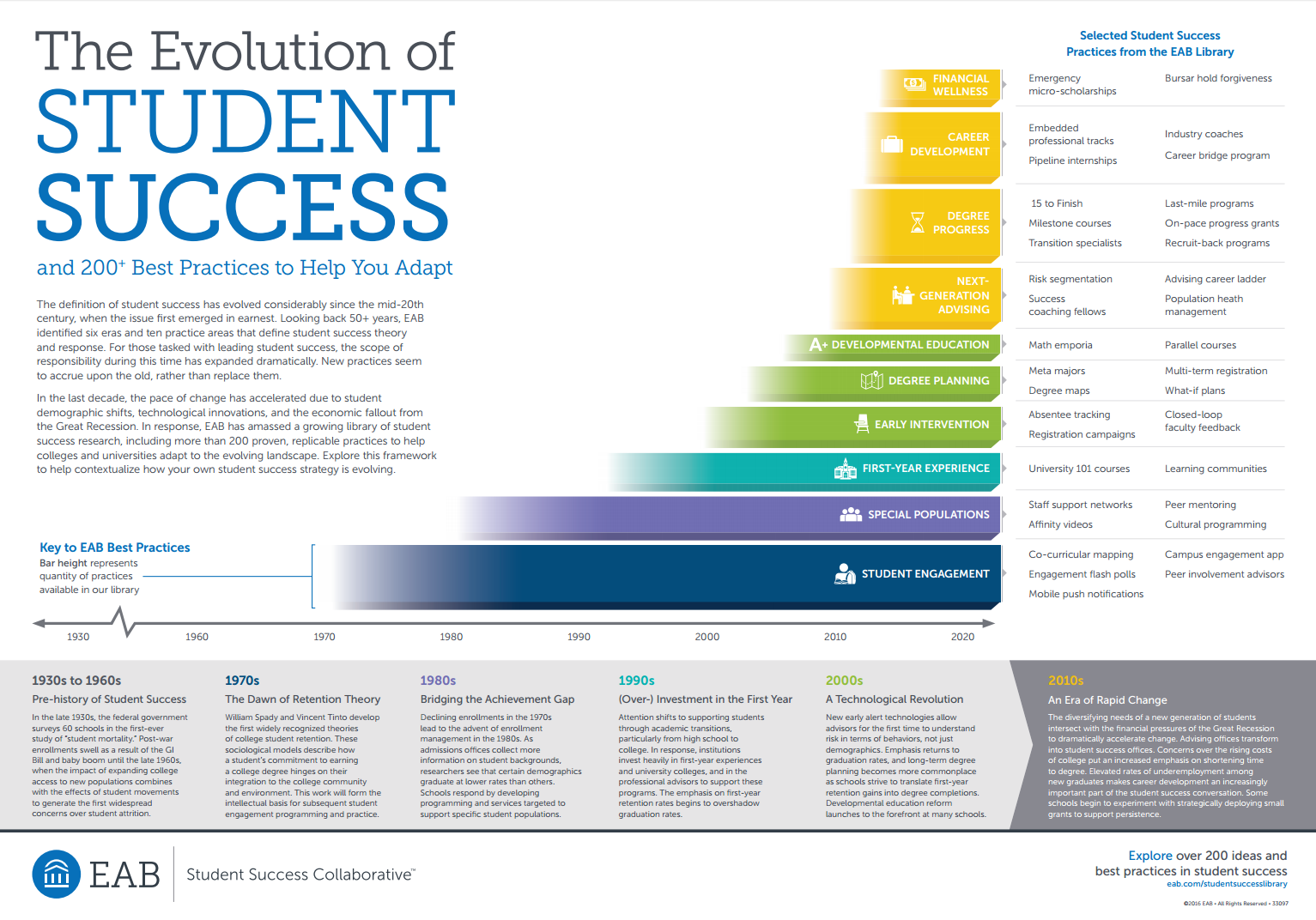You have /5 articles left.
Sign up for a free account or log in.
College administrators in the field of student success who feel as though their jobs are getting more hectic each day aren't imagining things, according to the EAB.
Researchers at the EAB marked the Washington, D.C., based research and consulting firm’s 10th anniversary this year by reviewing the student success practices it has compiled in its online research library. They found that the concept of student success has since the 1970s steadily expanded to include new responsibilities for colleges.
“Unlike in real life, nothing seems to go extinct in this space,” said Ed Venit, senior director at the EAB. “We are adding things on.”
In an interview, Venit traced the history of student success back to the ’70s and research that explored student retention rates. The ’80s then brought increased attention to supporting students from different backgrounds, followed by investments in the first-year experience in the ’90s and technology-driven advances such as early warning systems in the early 2000s.
Higher education has seen an “exponential upswing” in the field of student success in the years following the financial crisis, as colleges have added financial wellness, career development and degree progress programs to better serve at-risk students, Venit said.
“This is no longer an issue that one person in student affairs cares about,” Venit said. “It’s something that the entire administration at schools spend time thinking about.”




